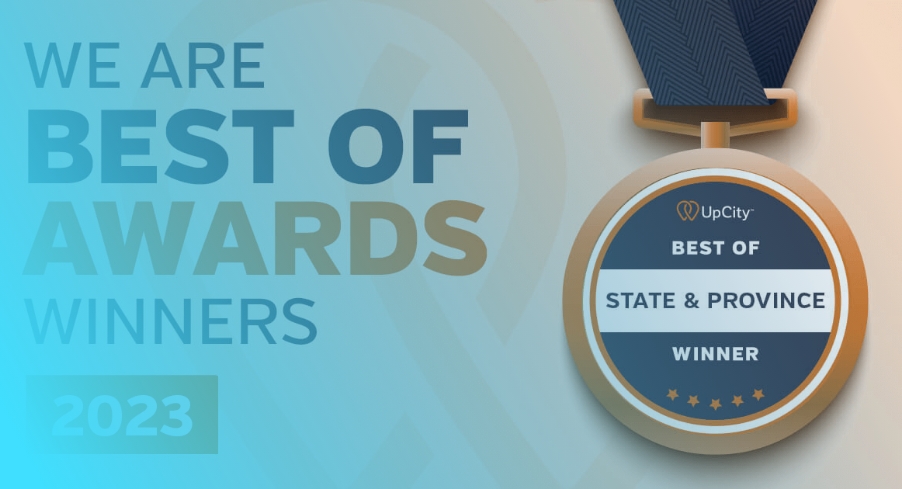-
TABLE OF CONTENTS

First Impressions Start with Colour—And Smart Brands Know It
Here’s something most websites get wrong: They treat colour like decoration.
But for smart brands? Colour is strategy.
Because in web design, colour isn’t just about looking good—it’s about guiding user behaviour.
Studies for Colour Psychology in Web Design show that up to 90% of first impressions are based on colour alone. And in that split second, visitors are already deciding: Do I trust this brand? Should I stay? Should I click?
At Arete Soft Labs, we design websites that influence decisions, not just emotions.
We use colour psychology to:
- Build trust
- Drive conversions
- Support clear user journeys
In this post, you’ll learn:
- How colour influences online behaviour
- Strategic colour schemes by industry
- Rules for using colour effectively
- The tools we use as a web design agency
- And how we apply all of this to clients across Canada and the U.S.
Let’s dive in.
Colour Psychology in Web Design: Why Colour Isn’t Just a “Visual Choice”
Most brands pick colours based on gut feeling or what “looks good.”
But here’s the truth: Every colour you use tells users something—whether you mean it to or not.
Colour impacts everything from brand perception to click-through rates. It influences how users feel on your site and what they’re likely to do next.
Researchers have found that colour affects:
- Attention span
- Emotional response
- Perceived credibility
- Decision-making speed
Think about it:
- High-contrast colours (think black + yellow) demand attention and can drive quick decisions.
- Muted pastels create a sense of softness and calm, perfect for brands focused on self-care or mindfulness.
- Dark, desaturated palettes can signal luxury or seriousness, depending on the layout and typography.
- Unexpected accent colours (like a flash of coral on a minimal interface) draw the eye and create memorable interactions.
But colour alone isn’t magic.
The context matters:
- Is the colour used for a CTA or background?
- Is it paired with strong messaging or confusing UX?
- Is the audience B2B professionals or Gen Z shoppers?
The key takeaway?
Colour is not decoration—it’s direction.
And when it’s used intentionally, it becomes one of the most powerful tools in your UX toolkit.
At Arete Soft Labs, we use colour as a behavioural cue. Every shade is selected based on what we want the user to feel, notice, or do, not just what matches the logo.
Suggested Colour Schemes by Industry (And Why They Work in the Real World)
Choosing colours for your website isn’t about following trends.
It’s about sending the right signals fast.
Users bring expectations. Your colour palette needs to meet them where they are.
Here’s how smart brands align colours with user intent across different industries:
| Industry | Go-To Colours | Real-World Rationale |
|---|---|---|
| Finance / Legal | Deep navy, slate grey, white | These shades feel stable and grounded. They build trust, exactly what people want when money or legal advice is involved. |
| Healthcare / Wellness | Soft blue, mint green, light lavender | Clean, gentle colours put people at ease. They suggest professionalism and empathy. |
| E-Commerce / Retail | Red (for urgency), black, teal, white | Bold colours stand out, especially on buttons. You’re driving fast decisions here, not just vibes. |
| Tech / SaaS | Bright blue, violet, neutral grey tones | Feels sharp and modern without trying too hard. These colours say: “We know what we’re doing.” |
| Travel / Hospitality | Turquoise, warm brown, sunset orange | Evokes emotion, warmth, and experience. You want people to feel something when they picture the journey. |
| Education / Nonprofit | Navy, burnt orange, beige | Balanced and clear. These palettes make information approachable without feeling too casual. |
| Beauty / Lifestyle | Blush pink, earthy tones, off-white | These are softer, sensory-driven palettes. Perfect for aspirational or wellness-focused brands. |
We combine behavioural design with brand positioning to build colour systems that don’t just look good—they work.
💡Pro move: Don’t just pick colours because they fit your industry.
Pick them because they support the user experience you want to create.
Rules for Using Colour Psychology in Web Design (That Most People Ignore)
Colour can make your site feel polished, clear, and conversion-ready.
Or… it can make it look like a confusing mess.
Most sites land somewhere in between.
Here’s how to stay on the right side of that line.
1. Use Colour to Create Visual Hierarchy
Not everything on your page should fight for attention.
Use contrast and weight to guide the eye—headlines, buttons, form fields. Make it clear where the user should look first.
💡Pro tip: Don’t just make your CTA button “stand out.” Make sure it’s the only thing that stands out in that moment.
2. Don’t Rely on Colour Alone
Colourblind users exist. So do bad lighting conditions and low-end monitors.
Never use colour as your only way to communicate something. Pair it with icons, labels, or text cues.
3. Check Your Contrast—Always
Low-contrast text might look sleek, but it’s murder on usability.
Stick to WCAG guidelines. If users can’t read your content comfortably, they won’t stick around.
Use tools like:
- WebAIM Contrast Checker
- Stark plugin (for Figma/Sketch/Adobe XD)
4. Stick to a Limited Palette
More isn’t better. Too many colours = chaos.
A good rule of thumb:
- 1 primary brand colour
- 1 secondary/accent colour
- A few neutrals (white, grey, black)
Keep it simple, and your site will feel cleaner, faster, and easier to use.
5. Stay Consistent Across All Touchpoints
Your website, email headers, social graphics, and mobile UI—they should all speak the same visual language.
Changing shades or overusing gradients between platforms creates friction. And friction kills trust.
At Arete Soft Labs, we build colour systems with purpose, not just style.
Because when every colour is doing its job, your website feels effortless to use (and that’s not by accident).
The Tools We Actually Use (and Recommend to Clients)
Designing with colour isn’t just about taste. It’s about testing, adjusting, and making sure it works for your users.
Here are the tools we (and a lot of top-tier design teams) actually use when building real websites:
| Tool | Use Case |
|---|---|
| Coolors | Fast palette generator for brainstorming |
| Adobe Color | Test colour harmony + trends |
| WebAIM Contrast Checker | Ensures accessibility across all screens |
| ColorZilla | Eyedropper + gradient tool in-browser |
| Khroma | AI-powered palette suggestions based on taste |
| Figma Plugins: Stark / Color Palettes | Stark: For real-time accessibility checks Color Palettes: For importing curated palettes directly into your design workflow |
You don’t need to use all of them. But using none of them?
That’s how inconsistent, off-brand, and low-converting designs get made.
Using Colour Psychology in Web Design: Our Process
Here’s the difference between a site that just “looks good” and one that actually works:
Intentional design.
And colour is a huge part of that.
We use colour psychology to influence how users feel, what they notice, and what they do next. Here’s how we make that happen—step by step:
| Step | Description |
|---|---|
| Step 1: Brand Discovery + Behaviour Goals | Before we touch colour, we get clear on:
|
| Step 2: Strategy First, Aesthetics Second | We build your colour system around:
|
| Step 3: Visual Design + Testing | Once the palette is in place, we apply it across your UI:
|
This UX Fix Led to a 23% Jump in Form Submissions
We worked with a professional services brand targeting high-net-worth clients across Canada.
The problem?
Their original palette used soft beige and muted blues—trustworthy, yes, but too passive.
We introduced a bold slate accent + deep navy contrast. The result: more visual clarity, stronger CTA focus, and a 23% lift in lead form completions.
Bottom line?
We use colour as a conversion tool, not a cosmetic one.
And that mindset drives results, whether you’re selling skincare or SaaS.
Common Mistakes in Using Colour Psychology in Web Design (and How Smart Brands Avoid Them)
You’d be surprised how often colour decisions derail a good design.
It’s not usually a lack of effort—it’s just that the strategy isn’t there.
Let’s break down the most common missteps we see (and what smart, well-positioned brands do instead):
| Mistake | Description |
|---|---|
| Mistake #1: Chasing Colour Trends |
That punchy neon everyone’s using right now?
It might be hot on TikTok, but that doesn’t mean it belongs in your navigation bar.
Trends fade. What lasts is colour that aligns with your message, your audience, and your goals. |
| Mistake #2: Ignoring Contrast |
It happens all the time: light grey text on a white background.
Looks modern… until someone actually tries to read it. If your colours don’t have enough contrast, users will bounce fast.
Smart brands don’t sacrifice legibility for style. Especially when accessibility is on the line. |
| Mistake #3: Colour Inconsistency |
Homepage buttons are blue. Your email banners are green. Your landing pages? Something totally different.
It’s not a brand anymore—it’s a guessing game.
Consistent colour builds trust. It makes your brand feel tight, intentional, and easy to recognize—even at a glance. |
| Mistake #4: Using Colour Alone to Communicate |
Red for errors, green for success—that’s UX 101. But not everyone sees colour the same way.
Without supporting text, icons, or shapes, you risk leaving some users confused (or excluded).
Clarity > cleverness. Every time. |
| Mistake #5: Everything Screams for Attention |
Bright buttons, bold alerts, neon CTAs—all fighting for attention.
What’s the user supposed to focus on?
Here’s the trick: restraint.
Smart design uses boldness strategically—not everywhere, just where it matters.
We see these mistakes in brands big and small.
But the best ones? They catch them early, fix them fast, and build smarter with every iteration. |
Final Thoughts: Colour Isn’t Just Design—It’s Strategy
Here’s what it comes down to:
Most websites use colour to decorate.
Smart websites use colour to drive behaviour.
That’s the difference between a page that “looks nice” and a site that actually converts.
Because when colour is used with intention, it:
- Guides attention where it needs to go
- Builds emotional connection faster
- Makes your brand feel polished, credible, and consistent
It’s not about choosing the “right” shade of blue.
It’s about knowing why you’re using it—and what you want it to do.
At Arete Soft Labs, we design every site with that principle in mind. Whether we’re working with a health brand in Vancouver, a SaaS company in Austin, or a consulting firm in Toronto, we bring the same mindset:
Design with purpose. Colour with strategy.
Partner With a Web Design Agency That Thinks in Colour Psychology
Most agencies focus on visuals. We focus on behaviour.
At Arete Soft Labs, we design websites with colour psychology baked into every step—from brand discovery to final button clicks.
That means:
- Your colour choices support real user goals
- Every element on the page earns its place
- And your site not only looks sharp, but actually works harder
We’ve helped brands across Canada and the U.S. turn strategy-driven design into measurable results—and we’d love to do the same for you.
👉 Explore our web design servicesOr reach out to chat about how we can bring behavioural thinking into your next website.



